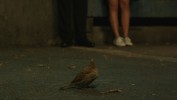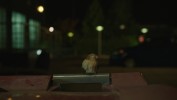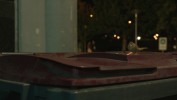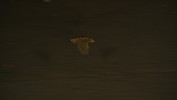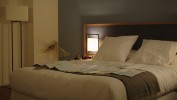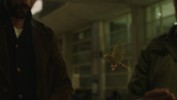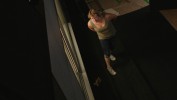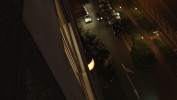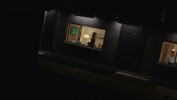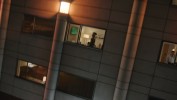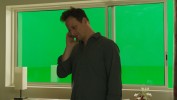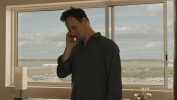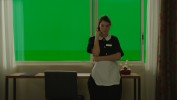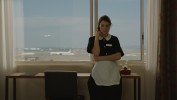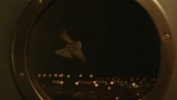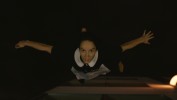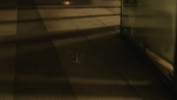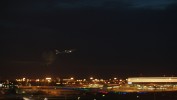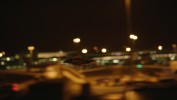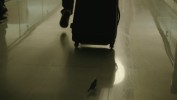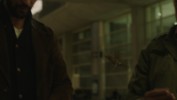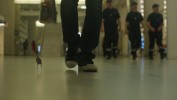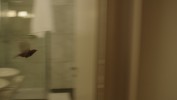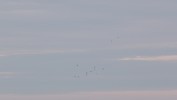Bird People
DIRECTOR : Pascale Ferran
PRODUCTION : Archipel 35
VFX SUPERVISOR : Pierre Buffin / Geoffrey Niquet
VFX PRODUCER : Marguerite Moreau de Lizoreux
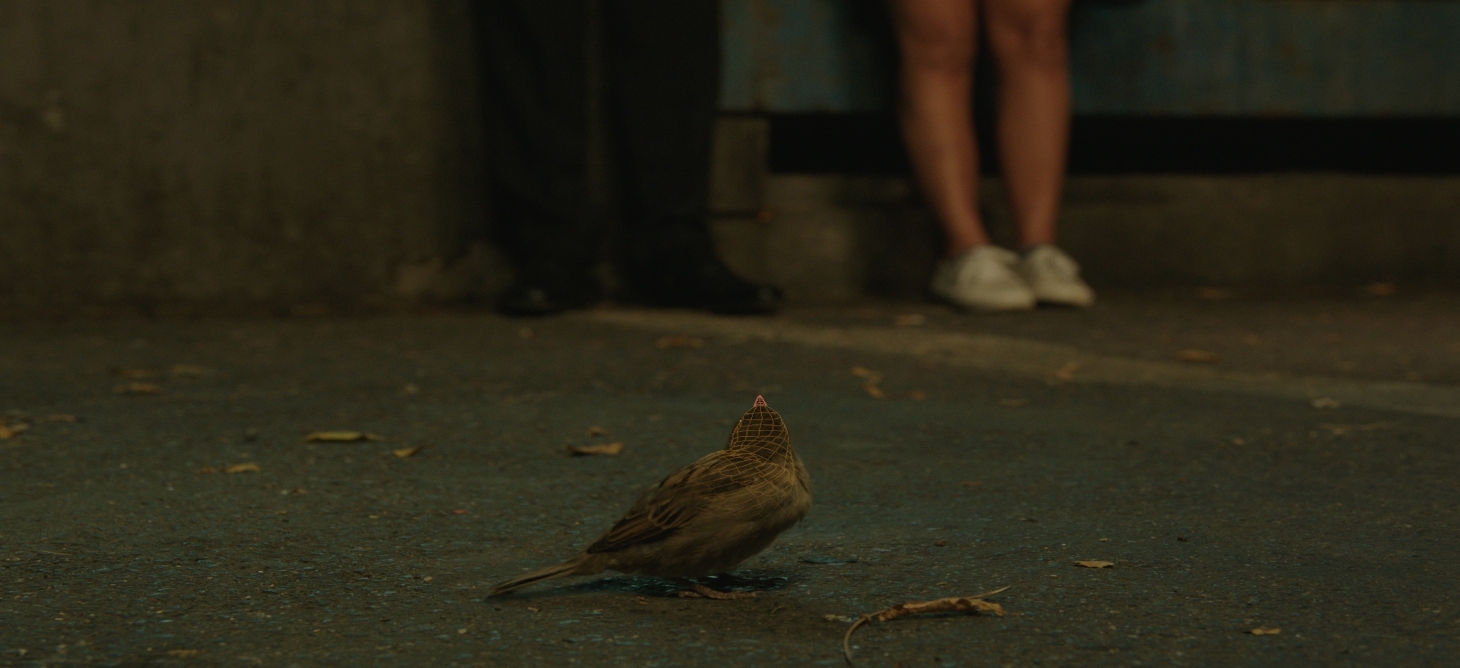
MAKING OF : Charles Labriet
MUSIC : The Surfmen / Taboo
NUMBER OF SHOTS : 425
Awards
1st Digital Creation Genie Awards:
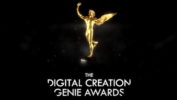 Geoffrey Niquet - "Best VFX Supervisor" (Feature)
Geoffrey Niquet - "Best VFX Supervisor" (Feature)
Production notes
Bird people
Pascale Ferran
Archipel 35 – 2014
Number of VFX shots: 425 plans
Supervisor : Geoffrey Niquet
Producer : Marguerite Moreau de Lizoreux
Production schedule:
Shooting : April to September 2012
VFX production : From October 2012 to January 2014
BUF worked on three main different types of sequences :
1) All the sequences with one or several birds from character transformation – exterior and interior scenery, day and night.
Those sequences include either a full 3D bird, either a 2D or 2D/3D VFX work on the live bird shot.
2) All the sequences shot on the green screen studio – Interior and exterior of the hotel bedroom, night and day.
3) All the sequences of the break-up between Gary and Elisabeth characters via Skype.
BUF has also been working occasionally on several other sequences for various interventions : restore, conformation, re-time, addition of elements, interior and exterior scenery – days and nights.
BIRD SHOTS (76 shots)
One of the characters of the movie faces her own metamorphosis into a bird. The transformation is followed by the audience.
The biggest challenge for the direction, the editor and the VFX was to make believable the presence of that character in the body of a bird, without falling into anthropomorphism or cartoon style. To be convincing, the effects on the bird had to be natural and realistic.
The bird had to do what the director Pascale Ferran wanted, and follow the storytelling, but had to remain a real bird in its attitude, way of moving etc... The rendering had to be absolutely photo-realistic.
During the initial discussions between Pascale Ferran and BUF about the technical possibilities and the various constraints, particularly the constraints tied to making a photo realistic full 3D bird, it appeared quickly that the best option would be to shoot maximum of shots with real sparrows, under the trainer's supervision, even if it means to edit inside the take and make 2D interventions.
This solution allowed us to have a real bird on the majority of the shots, and to keep the full 3D for the shots where it was really necessary..
Putting together live shots and 3D shots in the edit, the aim was that the audience would have no doubt about the reality and the credibility of the bird.
For BUF, the presence of real birds furthermore permitted to have the maximum of references of the real bird in order to make his 3D double.
Tests have been made before the shooting in order to show different kinds of possible interventions to the director, but also, the first tests of full 3D birds. We were able to determine from a precise storyboard what would be the best technical solution for shooting.
In spite of this preparation, it was quite difficult to determine the exact number of shots on which a VFX intervention would be necessary before the shooting was done, mostly because of the bird training which remains unpredictable by nature.
A supervisor followed the whole shooting of the sequences where one or several birds were to intervene in order to make sure that we would have all the materials we need for the post-production – that is:
- Empty plates of the scenery
- Some specific moves of the camera with a timing permitting a realistic animation of the shots with the full 3D birds
- Lighting references for the bird
All the information needed to virtually re-create the camera.
The different shots which needed a VFX intervention by BUF were finally divided up as follows :
1) Full 3D birds shots (42)
For these very specific shots, BUF re-created a full 3D sparrow, using the references of the real bird :
- Muscles have been re-created using an anatomic skeleton in order to deform the bare skin of the bird in a realistic way.
- The skin was dressed with feathers, feathers were modeled for the tallest ones,and for the rest feathers are done with a help of shader;
We have worked on the shaders and textures in order to be as close as possible of a photo-realistic rendering using sparrow's pictures taken during the shooting, but also extracted from the rushes of the movie, and stuffed ones.
We also created some animation cycles for the different bird's shifting in the air, but also on the ground, using some rushes of the movie.
The two main issues of the making have been:
- To develop a system able to adjust the ruffling of the sparrow's feathers from one shot to another, and even during a single shot, the bird can indeed double its volume just by puffing up his feathers. His shape then inevitably changes.
- To get back the real bird quality of movement: when flying, a complete wing beat takes approximately 1.2 frame. It was then necessary to animate the inter-frames in order to have a realistic motion blur. Happily, some shots were filmed at high speed (up to 300 frames/second), which permitted us to use high quality references.
For every full 3D shot, it was necessary to create an animation which could integrate the editing in a natural way. Then, we have proceeded to a lot of two-way trips with the editing. The director and the editor at first inlayed some colored stickers in every selected rush in order to determine the better crossing input and output points for the bird. It permitted then to make first animation proposals. Thanks to an interactive system based on animation banks, we were able to finalize these first drafts directly with Pascal Ferran. After the approval of the mock-up, it was just necessary to improve the animation using the postures and details extracted from the real birds rushes.
In order to integrate the bird in the shot, the light of the scenery has also been reproduced on the information extracted during the shooting. For some night shots, the bird has been locally re-enlighten in order to remain legible in the picture.
2) 2D birds shots (34)
On this kind of shots, BUF used the rushes of a bird shot in live in order to :
- Make some 2D splices between different takes or to straighten a jump-cut
- Move the bird into the scenery in order to get back an attitude or a movement, and then move it back into the good frame.
- 2D morphing to modify bird's motions or to make some freezing pictures live through again.
- Erase the bird's trainer sometimes presents in the frame
- Erase the food positioned on the scenery in order to attract the birds
- Erase the beak motions of the bird when eating the food positioned to attract it
- Retouch the scenery (light splices)
- Conformation of re-time on the shots
3) 2D/3D birds shots (16)
On this kind of shots, much more complicated than the 2D one, BUF acted the same way, adding though full 3D bird in order to :
Re-establish or re-create the continuity of a motion.
Insert some motions which were impossible to obtain through training (or non existing ones)
Create a splice between two different takes.
The pictures extracted from the original rushes were also re-projected in camera mapping in order to guarantee the continuity between the different takes and the 3D.
For all these shots, we needed at first to mock-up the different shots in close relationship with the edit. Indeed, it was difficult for Pascale Ferran and her editor, Mathilde Muyard, to edit empty shots without birds, or even some shots where the live bird was to be modified in an important way, it would have then been difficult to be able to read the real action in the good timing.
The edit gave a reference with some very precise indications concerning the timing on the one hand and the expected action on the other hand, but also the cutting and taking indications etc … BUF needed to conform it with the kind of shot involved :
- By making an animatic with a bird in shade following the timing, path and action indications for the 3D shots.
- By conforming the cuts and making a first working pass on the fittings, without finalizing, in order to be able to validate the action and the timing in the edit.
Then the mock-ups were sent again and integrated to the edit, that afterward gave us, as the edit was progressing, changes or information for the finalization.
The edit was staggered over a period of one year, so this principle of mock-up and of goings and comings with the edit was an integral part in the achievement of the movie's special effects.
«DISCOVERY» SHOTS GREEN SCREEN STUDIO (109 shots)
A whole part of the movie takes place at the Hilton hotel of CDG airport. For many reasons, it was not possible to shoot the movie inside of Hilton's rooms. The main reason was that the real hotel windows could not open, while in the scenario the bird must be able to go through it to enter and exit rooms. Therefore a copy of a room was recreated in the studio (interior scenery and exterior frontage), with green screen for the going through the window situations.
1) « Discovery » without birds (69 shots) / « Discovery » with bird (26 shots) – Interior scenery Hilton room
The stake of this series of shots was recreating a totally credible and coherent exterior scenery out of layers shot apart, outside and around the airport :
It was necessary to take into account different parameters and constraints:
Situate the room in which the action takes place (Akira's room, Gary's room, but also the rooms in which Audrey is cleaning, in order to determine which scenery should be seen from the window)
The fact that the rooms are situated on the 8th floor of the hotel, in order to give this feeling
The moment of the day / the hour when the action occurs for the integration and the grading of layers
The camera information (focal length, height, diaphragm) to recreate the right depth of field
Layers were selected and assembled in terms of timing and lighting for each shot by Pascale Ferran in the edit, then BUF handled the placement (following the criteria set above) and the integration of the latter (extraction of the green screen, masks integration, calibration).
To be as realistic as possible, the room was remodeled in 3D to be able to recreate a 3D camera that allowed us to calculate for each shot :
- to give the animation to the layers in case of camera movement
- the discovery, axis, width of the frame and horizon height
- the amount of blur depending on the focal, the opening and the distance of the focus.
2) Frontage expansion (14 shots) – Exterior scenery room
For the shots outside of the room recreated in studio, the background had to be integrated the same way from layers shot apart, but also reconstruction of the hotel facade around this room, following the same criteria for room location in terms of the figurative scenery inside :
- Modeling of the hotel facade following photo references and rushes
- Shadering/texturing
- Lighting and rendering
- Establishment of a reflection pass of the airport on the part shot in studio
This work also includes integration of scenery reflection on studio windows, and adding reflections on the reconstructed parts.
SHOTS SKYPE EFFECT (34 shots)
All the break sequences between Gary and his wife Elisabeth occur by interposed screens via Skype, from the viewpoint of Gary's room.
The images of Elisabeth were mainly diffused directly on Gary's screen during his own takes, a small part was reintegrated.
The work done by BUF on this sequence was :
Integrate rushes with Elisabeth on the screen when it was necessary (integration of shots chosen during editing, calibration)
Recreate the effect and feeling of a video conversation via internet, like Skype
To recreate the « Skype » effect, we had to find a good compromise between the effect of credible compression video throughout the sequence, and to try not to degrade the imagery as much as possible.
BUF proposed different compression types and settings among which Pascale Ferran was able to make a choice. Sometimes shots were delivered in different versions, with higher or lower compression for pictures on screen in order to vary with the video quality over time while editing.
RETIME SHOTS (51 shots) & VARIOUS (63 shots, including shots with birds)
Finally, BUF handled several shots (with and without bird) for various works :
- Integration of a full CG plane (modeling, texturing, animation, lighting and compositing)
- Integration of various videos on computer screens
- Retime (linear or not, with artifact correction)
- Different kinds of restore
- Reframing



